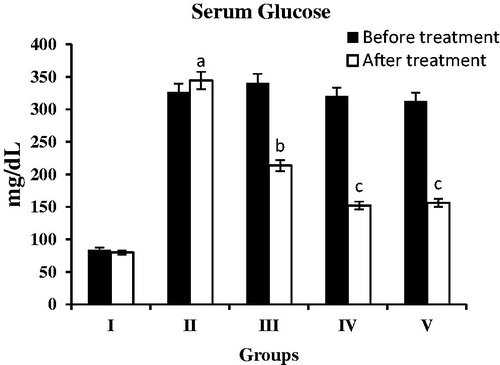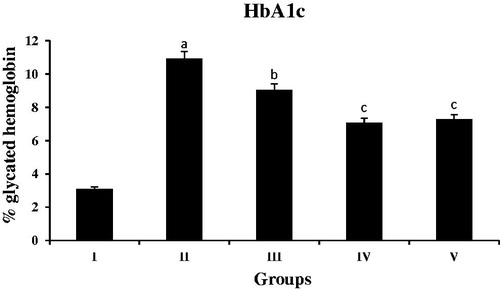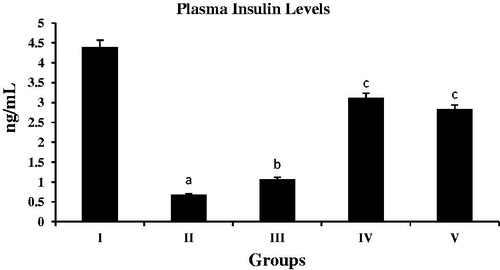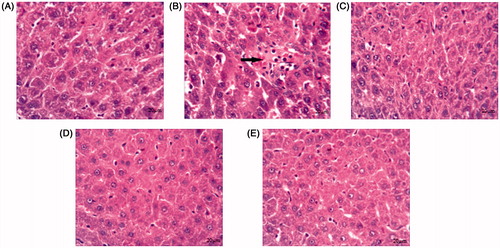Figures & data
Figure 1. Fasting blood glucose levels. Values are expressed as mean ± SEM of six rats in each group; significance accepted at p < 0.05; astatistically significant as compared with the normal group; b,cstatistically significant as compared with the diabetic group. Similar alphabets indicate no significant difference between groups.

Figure 2. Glycated hemoglobin levels. Values are expressed as mean ± SEM of six rats in each group; significance accepted at p < 0.05; astatistically significant as compared with the normal group; b,cstatistically significant as compared with the diabetic group. Similar alphabets indicate no significant difference between groups.

Figure 3. Plasma insulin levels. Values are expressed as mean ± SEM of six rats in each group; significance accepted at p < 0.05; astatistically significant as compared with the normal group; b,cstatistically significant as compared with the diabetic group. Similar alphabets indicate no significant difference between groups.

Table 1. Activities of toxicity markers in liver (IU/L).
Figure 4. Hepatic glycogen content. Values are expressed as mean ± SEM of six rats in each group; significance accepted at p < 0.05; astatistically significant as compared with the normal group; b,cstatistically significant as compared with diabetic group. Similar alphabets indicate no significant difference between groups.

Table 2. Activities of carbohydrate metabolizing enzymes.
Figure 5. Histopathology of liver. (A) Normal control – normal hepatocytes showing normal architecture. (B) Diabetic control – extensive hepatocellular damage in the form of inflammation, sinusoidal dilation, fatty changes, and extensive vacuolization with disappearance of nuclei. (C)–(E) Diabetic + CQSF shows only mild inflammation, and there is restoration of normal tissue morphology.

